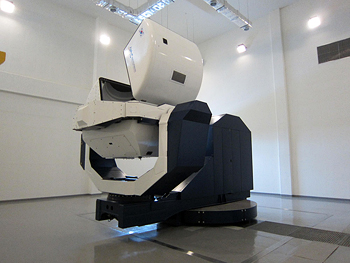INDIAN ARMED FORCES CHIEFS ON OUR RELENTLESS AND FOCUSED PUBLISHING EFFORTS

The insightful articles, inspiring narrations and analytical perspectives presented by the Editorial Team, establish an alluring connect with the reader. My compliments and best wishes to SP Guide Publications.

"Over the past 60 years, the growth of SP Guide Publications has mirrored the rising stature of Indian Navy. Its well-researched and informative magazines on Defence and Aerospace sector have served to shape an educated opinion of our military personnel, policy makers and the public alike. I wish SP's Publication team continued success, fair winds and following seas in all future endeavour!"

Since, its inception in 1964, SP Guide Publications has consistently demonstrated commitment to high-quality journalism in the aerospace and defence sectors, earning a well-deserved reputation as Asia's largest media house in this domain. I wish SP Guide Publications continued success in its pursuit of excellence.
- Indian Air Force Aims for Full Indigenous Inventory by 2047 — Air Chief Marshal A.P. Singh
- General Upendra Dwivedi takes over as the Chief of the Army Staff
- Rajnath Singh assumes charge as Defence Minister for the second consecutive term
- Admiral Dinesh K. Tripathi assumes Command of the Indian Navy as 26th Chief of the Naval Staff
- Prime Minister witnesses 'Bharat Shakti' – a Tri-Services Firing and Manoeuvre Exercise in Pokhran, Rajasthan
IAF for 3 spatial disorientation simulators for rookie pilots

With spatial disorientation continuing to be a serious concern for flight safety and cockpit effectiveness, the Indian Air Force has called for information to procure three new spatial disorientation simulators for young pilots. The simulator is intended to be used for training of aircrew in recognizing and effectively managing the experience of disorientation providing demonstration of spatial disorientation, disorientation training in flight, flight simulation and night vision training and motion sickness desensitisation. The IAF wants the new simulators to help rookie pilots to build resistance the most common spatial illusions, including coriolis, somatogyral, oculogyral, graveyard spin, nystagmus, leans, autokinesis, false horizon and black hole approach. The IAF has stipulated that the trainer should preferably provide six-degrees of freedom, with three-degrees of freedom in roll, yaw the pitch axis. The system should include a dual cockpit with pilot seats adjustable. Interactive flight controls should include changeable re-centering forces and dampening, visual displays should include increased field of view (FOV) and infrared projection for Night Vision image. The simulator should include aircraft sound and vibration simulation, chin window to be available for landing on platforms like an oil rig.





